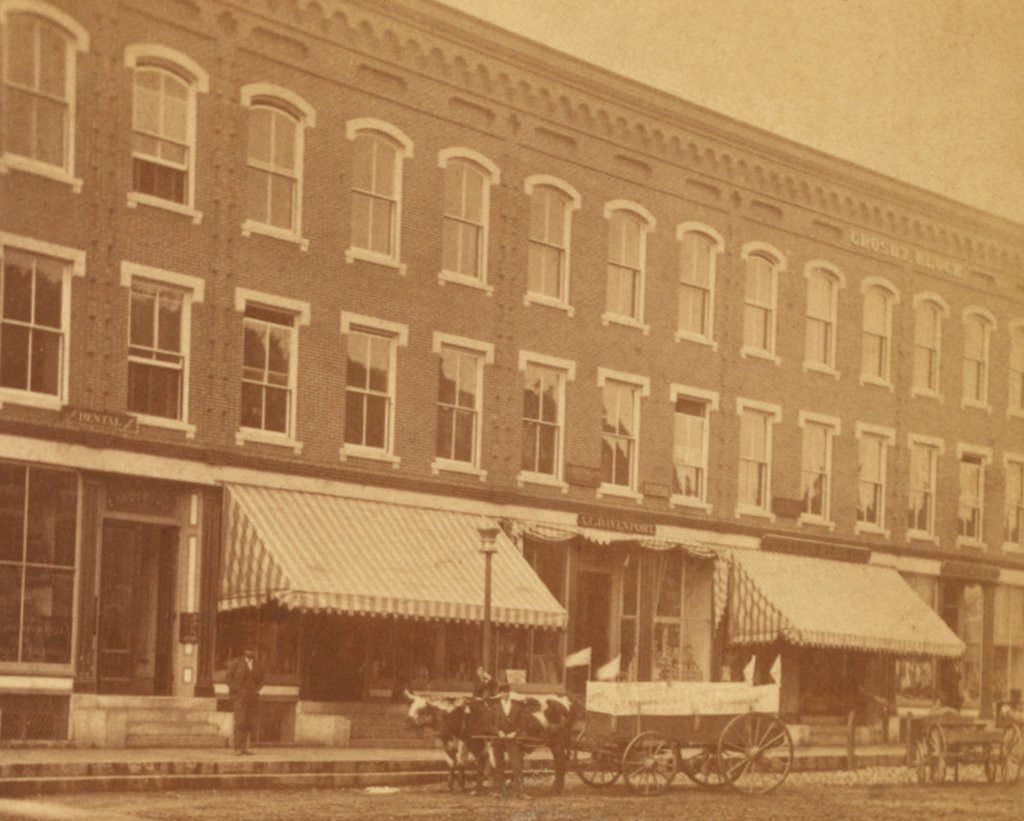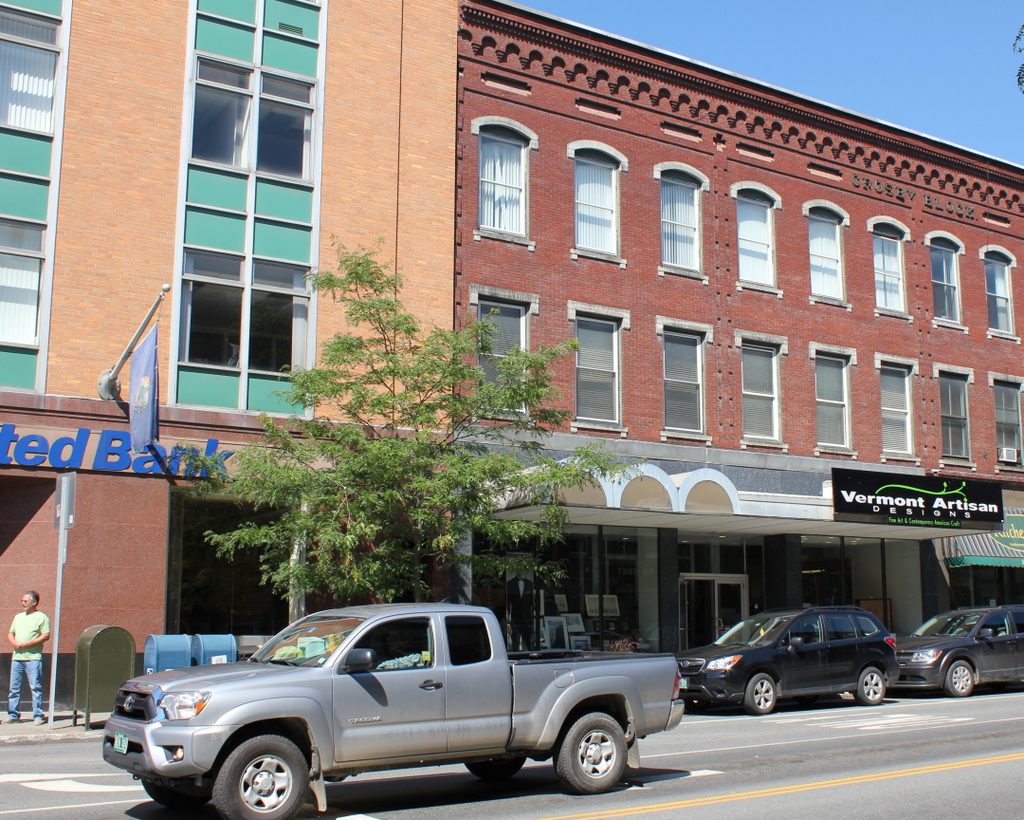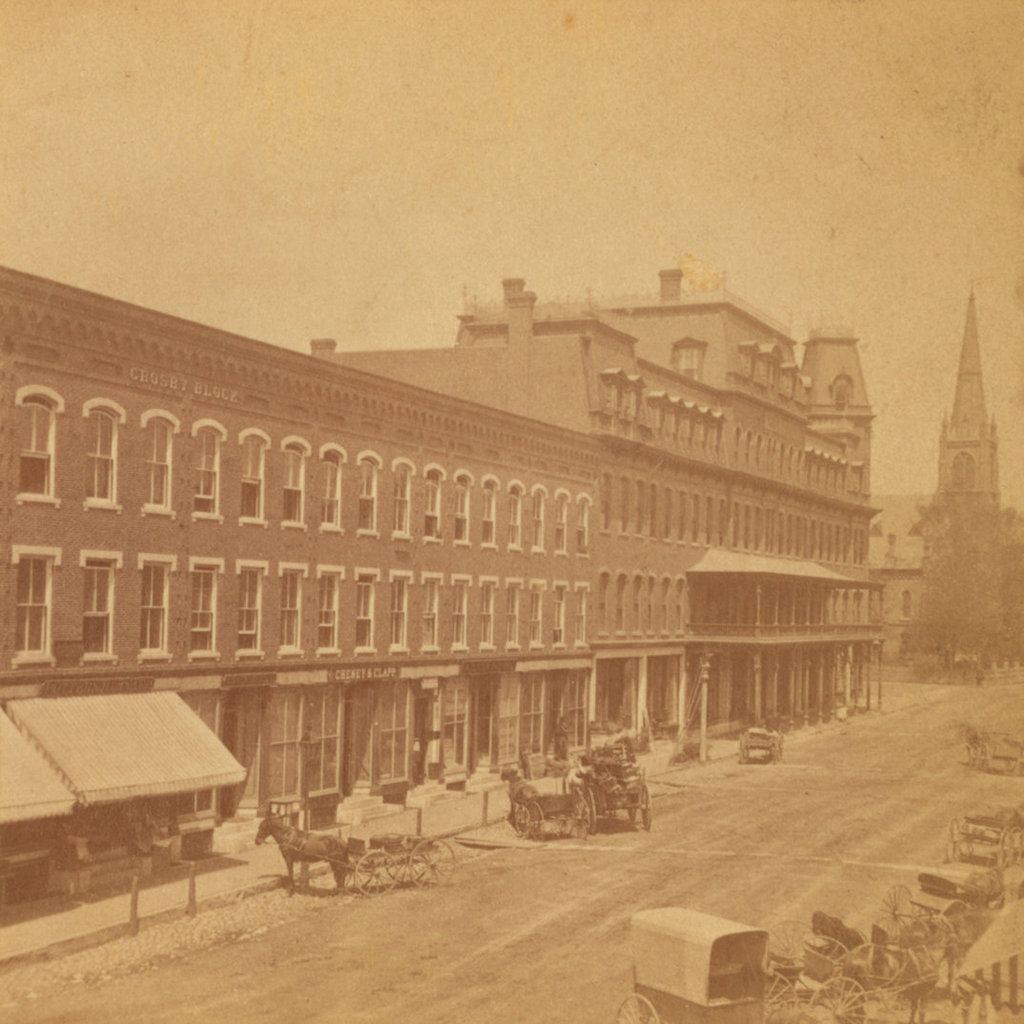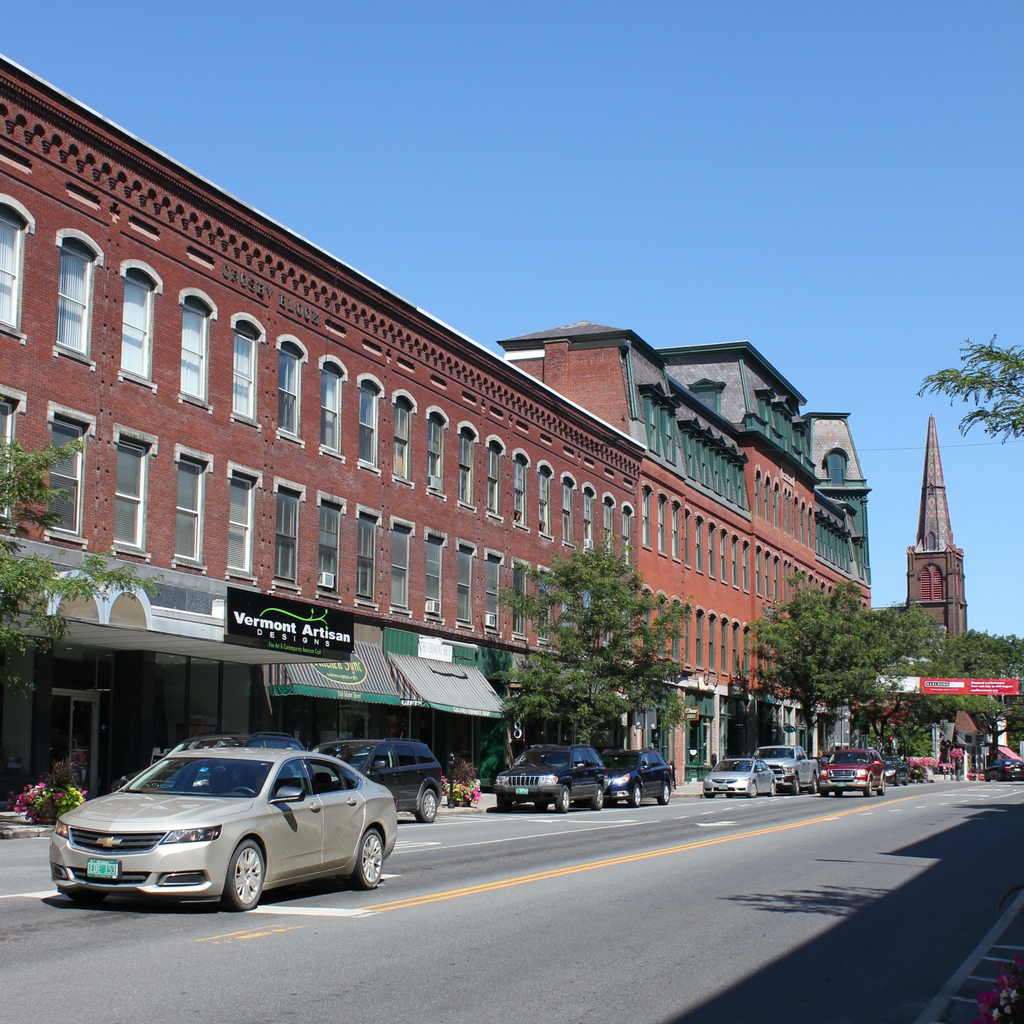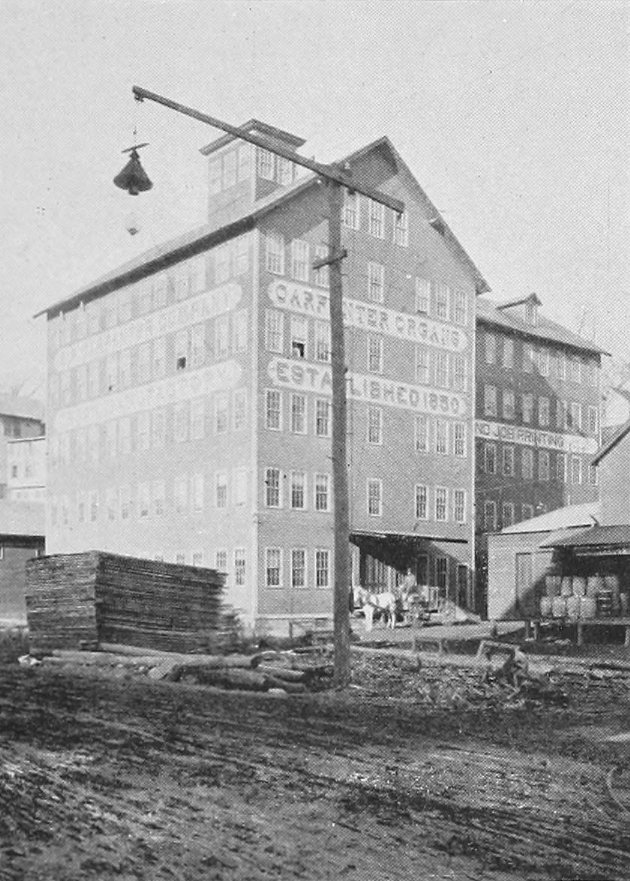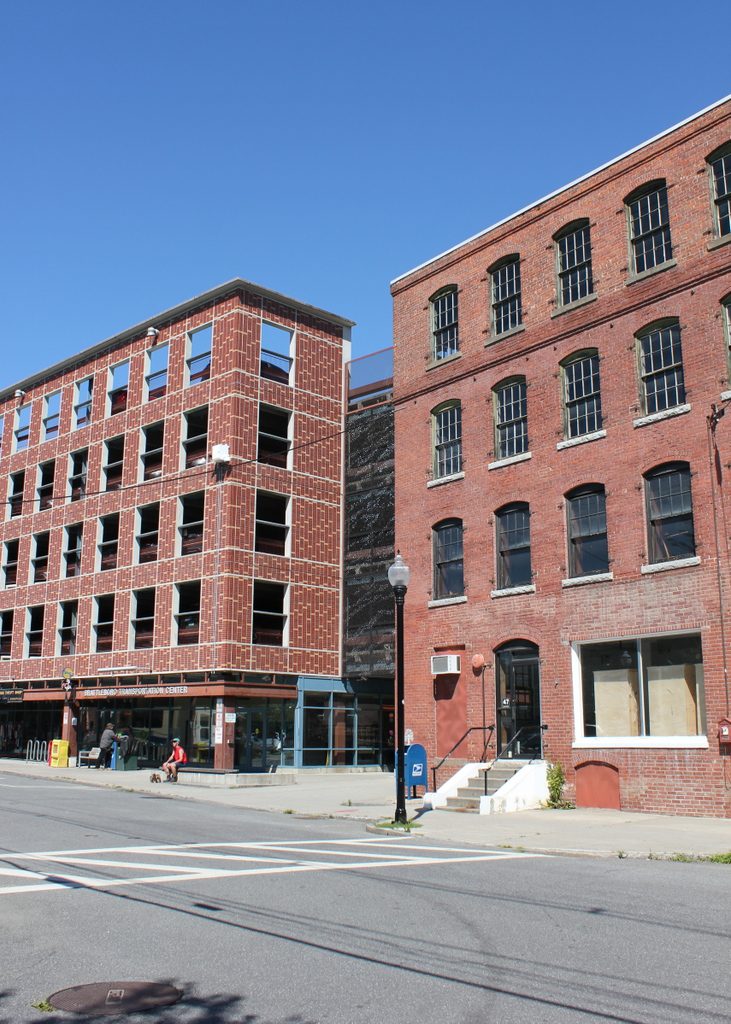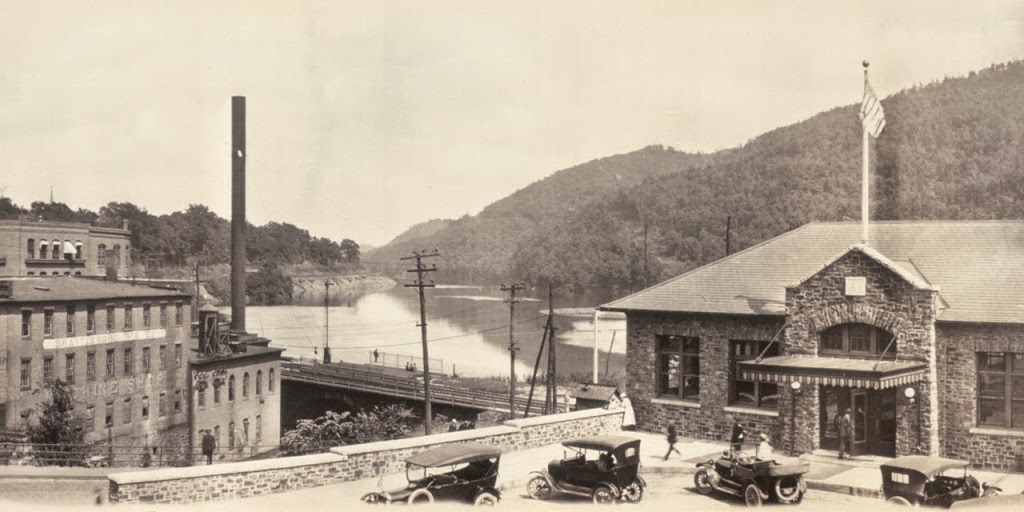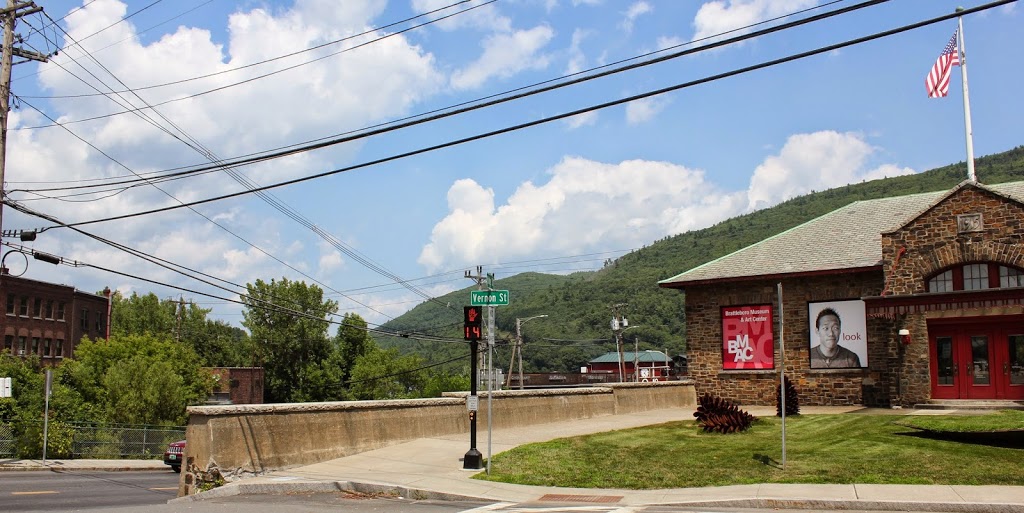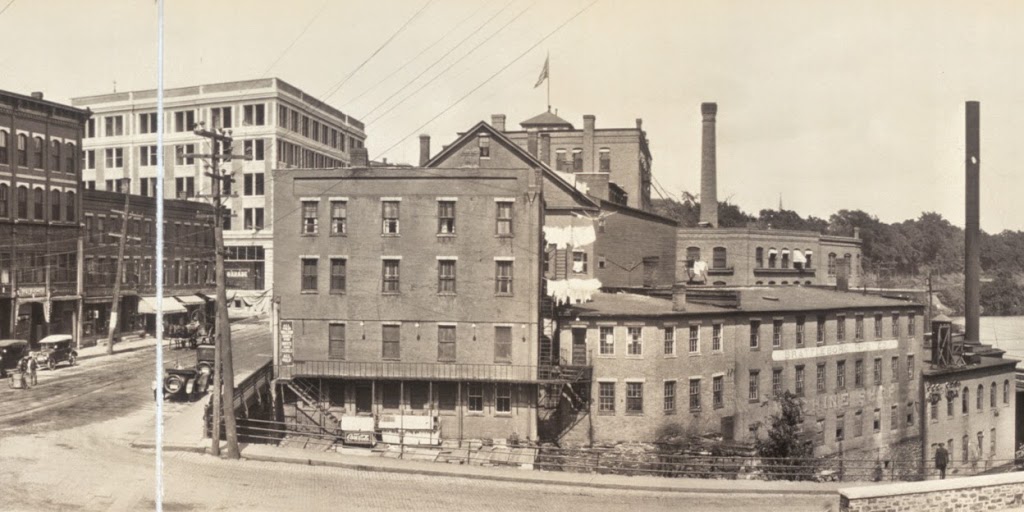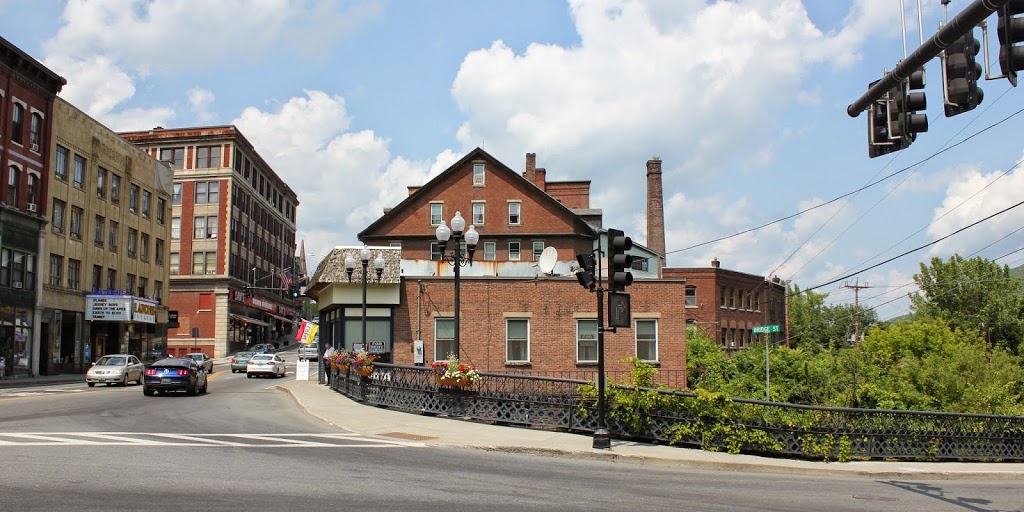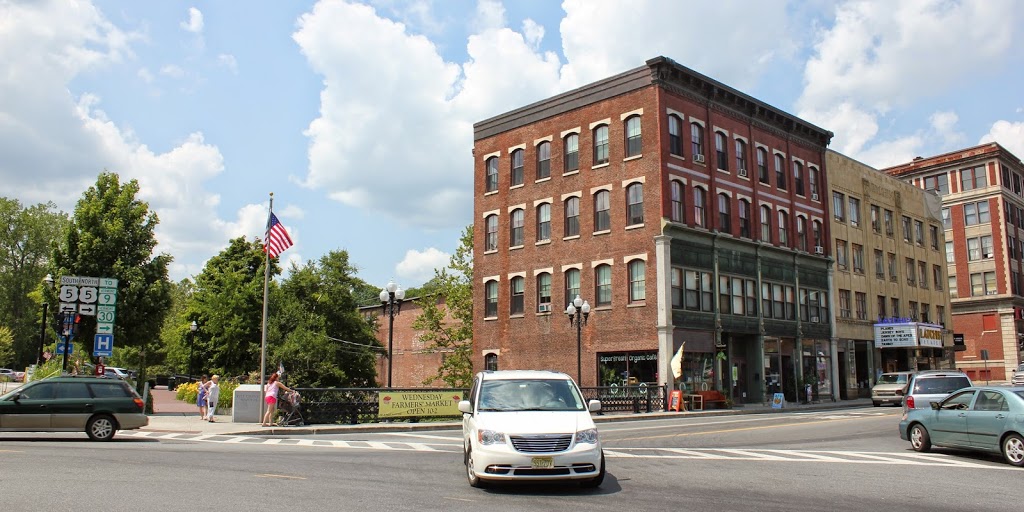The Crosby Block on Main Street, just north of the corner of Elliot Street in Brattleboro, around 1871-1885. Image courtesy of the New York Public Library.
The scene in 2017:
As mentioned in the previous post, the Crosby Block was built in 1871, replacing several earlier commercial buildings that had been destroyed in a large fire two years before. It was owned by grain and flour merchant Edward Crosby, who built it at a cost of almost $175,000, or around $3.6 million today. Its Italianate-style design was the work of local architect George A. Hines, and it was originally 26 window bays in width, extending along Main Street from the corner of Elliot Street north to the Brooks House. Upon completion, the ground floor of the building housed a variety of stores, while the second floor had professional offices and the third floor had apartments.
Nearly 150 years after it was built, most of the Crosby Block has seen little change. However, the southernmost section of the building – once the home of Vermont National Bank – was rebuilt in the late 1950s, with an International Style yellow brick and metal facade. Now occupied by People’s United Bank, this section is still standing on the left side of the scene, and sharply contrasts with the surviving three quarters of the Crosby Block. The rest of the building, particularly the upper floors, has remained well-preserved, though. Today, it is one of the many historic 19th century commercial buildings that still line Main Street, and it is a contributing property in the Brattleboro Downtown Historic District, which was added to the National Register of Historic Places in 1983.

